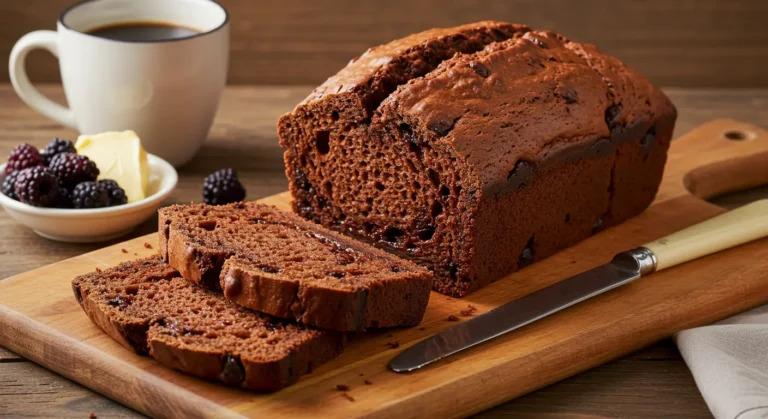How to Make Sourdough English Muffins from Scratch
Home bakers across America are turning their kitchens into artisanal bakeries, with muffins emerging as one of the most rewarding projects for both beginners and experienced bakers alike. The distinctive nooks and crannies of sourdough English muffins capture pools of melting butter and are actually easier to achieve at home than in commercial varieties. These muffins deliver a complex tangy flavor that store-bought versions simply cannot match, while the fermentation process makes your sourdough English muffins more digestible and nutritionally accessible. Ready to transform your morning routine?
Table of Contents
Ingredients List
For the perfect batch (yields 12 muffins), you’ll need:
- 1 cup (250g) active sourdough starter at peak activity
- 2 cups (480ml) whole milk, slightly warmed
- 4 cups (500g) all-purpose flour
- 2 tablespoons (30g) butter, melted
- 1 tablespoon (12g) granulated sugar
- 1½ teaspoons (9g) salt
- ¼ cup (40g) cornmeal or semolina for dusting
Timing
Preparation time: 30 minutes of active work Fermentation time: 8-12 hours (primarily overnight) Cooking time: 15-20 minutes Total time: 9-13 hours (with just 50 minutes of active involvement)
Step-by-Step Instructions
Step 1: Prepare Your Sourdough Starter
Feed your sourdough starter 4-6 hours before making your sourdough English muffins dough. Your starter should be at peak activity—doubled in volume with a bubbly surface and pleasantly sour aroma. This ensures your sourdough English muffins develop those signature holes while fermenting properly.
Pro tip: Place a rubber band around your starter jar at the starting level to easily track when it has doubled in size, indicating peak fermentation activity for perfect sourdough English muffins.
Step 2: Mix The Dough
In a large mixing bowl, combine your active starter with warmed milk (body temperature, about 95°F/35°C) and stir until the starter dissolves completely. Add the melted butter, sugar, and 2 cups of flour, mixing until smooth. Gradually add the remaining flour and salt, incorporating until you have a sticky, shaggy dough for your sourdough English muffins.
Step 3: Develop The Gluten
Cover the dough and let it rest for 30 minutes. This autolyse period allows the flour to hydrate fully, making the next step easier. After resting, turn the sourdough English muffins dough onto a floured surface and knead for 5-7 minutes until smooth and elastic. The dough should still be slightly tacky but workable.
Step 4: First Fermentation
Place the sourdough English muffins dough in a lightly oiled bowl, cover with plastic wrap or a damp kitchen towel, and allow to ferment at room temperature (68-72°F/20-22°C) for 4-6 hours, or until doubled in size. For enhanced flavor development in your sourdough English muffins, you can refrigerate the dough after 2 hours and continue fermentation overnight.
Step 5: Shape Your Muffins
Dust your work surface with a mixture of cornmeal and flour. Turn out the dough and gently press it into a rectangle about ½-inch (1.3cm) thick. Use a 3-inch (7.5cm) round cutter or a drinking glass to cut out sourdough English muffins shapes. Alternatively, divide the dough into 12 equal pieces and shape into balls, then flatten to the desired thickness.
Step 6: Second Fermentation
Place the shaped sourdough English muffins on baking sheets dusted with cornmeal, sprinkle more cornmeal on top, and cover with a clean kitchen towel. Allow them to rise for 1-2 hours at room temperature until puffy and increased in size by about 50%.
Step 7: Cook The Muffins
Heat a cast-iron skillet or griddle over medium-low heat. When hot, carefully transfer several sourdough English muffins to the dry pan, leaving at least 1 inch between them for expansion. Cook for 7-8 minutes on each side until golden brown and the internal temperature reaches 200°F (93°C).
Step 8: Cool Properly
Transfer the cooked sourdough English muffins to a wire rack and allow them to cool for at least 30 minutes before splitting. This resting period allows the crumb structure to set properly, ensuring you’ll get those coveted nooks and crannies when split open.
Nutritional Information
Per muffin (approximate values):
- Calories: 175
- Carbohydrates: 32g
- Protein: 6g
- Fat: 3g
- Fiber: 2g
- Sugar: 1.5g
- Sodium: 290mg
Healthier Alternatives for the Recipe
- Substitute half the all-purpose flour with whole wheat or spelt flour for increased fiber and nutrient content in your sourdough English muffins
- Incorporate 2 tablespoons of ground flaxseed or chia seeds for omega-3 fatty acids in your sourdough English muffins
- Replace sugar with raw honey or pure maple syrup for additional micronutrients
- For gluten-sensitive individuals, experiment with a mix of rice flour and tapioca starch for alternative sourdough English muffins (though note that the texture will differ significantly)
- Add 2 tablespoons of hemp seeds for a protein boost in your sourdough English muffins without altering the texture
Serving Suggestions
Elevate your muffins beyond the standard butter and jam with these inspired serving ideas:
- Create the ultimate breakfast sandwich with avocado, a perfectly poached egg, and microgreens on toasted sourdough English muffins
- Serve toasted muffins with ricotta cheese and honey drizzle, topped with seasonal fruit
- Use sourdough English muffins as the base for eggs Benedict with hollandaise sauce and smoked salmon
- Try a savory option with herbed goat cheese, roasted red peppers, and arugula on crispy muffins
Common Mistakes to Avoid
Overworking the Dough
Excessive kneading develops too much gluten, resulting in tough muffins. Handle the dough just enough to create a smooth texture without developing the structure of bread dough.
Using Inactive Starter
An underfed or weak starter leads to dense result without proper rise. Ensure your starter is at peak activity before incorporating it into your muffins dough.
Cooking at High Heat
High heat creates muffins with a burnt exterior and an undercooked center. Maintain medium-low heat throughout the cooking process for even browning and thorough cooking of your English muffins.
Cutting with a Knife Instead of Fork-Splitting
Using a knife to slice the muffins creates a smooth cut that doesn’t showcase the nooks and crannies. Always use a fork to preserve the textural appeal that makes sourdough English muffins special.
Storing Tips for the Recipe
Maximize freshness and convenience with these storage strategies :
Short-term storage: Cool completely before storing in an airtight container at room temperature for up to 3 days. The natural fermentation acts as a preservative, helping these sourdough muffins stay fresh longer than commercial versions.
Freezer storage: For long-term storage, cool completely, then freeze in a single layer before transferring to a freezer bag. They’ll maintain quality for up to 3 months.
Refreshing: To revive day-old sourdough English muffins, lightly sprinkle with water and toast until crisp and warm. For frozen sourdough English muffins, thaw at room temperature then toast, or toast directly from frozen for an additional minute.
Make-ahead option: You can refrigerate the shaped, uncooked muffins for up to 24 hours before cooking, allowing for easy batch preparation and fresh-cooked sourdough muffins when needed.
Conclusion
Homemade sourdough English muffins deliver an unmatched combination of tangy flavor, perfect texture, and nutritional benefits that commercial versions simply cannot replicate. With minimal active time but maximal flavor development, this recipe transforms simple ingredients into breakfast staples worthy of your morning ritual. The natural fermentation process not only creates those signature nooks and crannies in your sourdough English muffins but also enhances digestibility and nutrient absorption.
Ready to experience the difference? Try this recipe this weekend and leave a comment sharing your results!
FAQs
Can I make sourdough English muffins without an established sourdough starter?
While a mature starter yields the best results for sourdough English muffins, you can create a quick starter by mixing equal parts flour and water with a pinch of commercial yeast. Let it ferment for 24 hours before using. However, the flavor complexity will be less developed than with an established starter for your muffins.
Why aren’t my English muffins developing those classic nooks and crannies?
The signature texture in sourdough English muffins comes from proper fermentation and cooking technique. Ensure your starter is active, your dough is sufficiently hydrated, and you’re splitting the muffins with a fork rather than cutting with a knife.
Can this recipe be made dairy-free?
Absolutely! Substitute the milk with almond, oat, or soy milk and replace butter with coconut oil or a plant-based butter alternative. The texture of your sourdough English muffins may be slightly different, but the flavor will remain delicious.
How can I tell when my muffins are fully cooked?
Properly cooked muffins should reach an internal temperature of 200°F (93°C). If you don’t have a thermometer, tap the bottom of the sourdough English muffin—it should sound hollow when done.
Can I add flavors to the basic recipe?
Yes! Consider adding 1-2 tablespoons of seeds (poppy, sesame, flax), dried herbs (rosemary, thyme), or sweet additions (cinnamon, raisins) to the dough during the mixing stage for creative variations that maintain the authentic sourdough English muffins character.
Your Feedback Matters
There are no reviews yet. Be the first one to write one.





